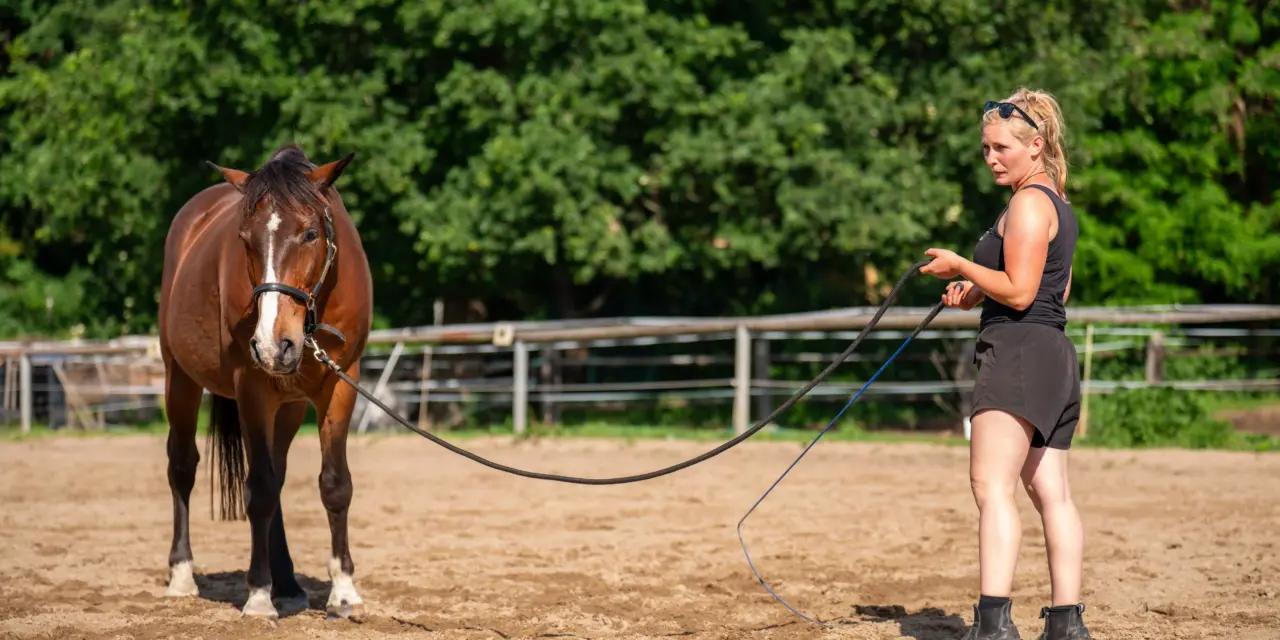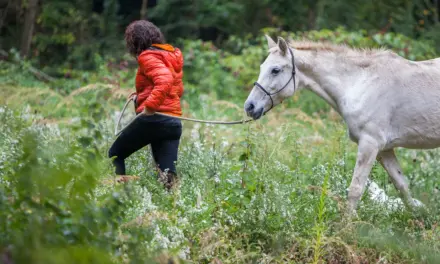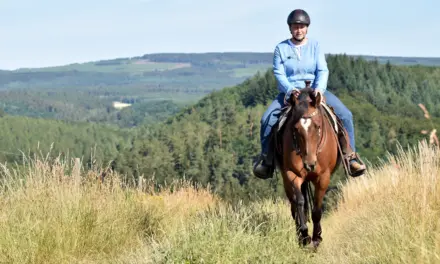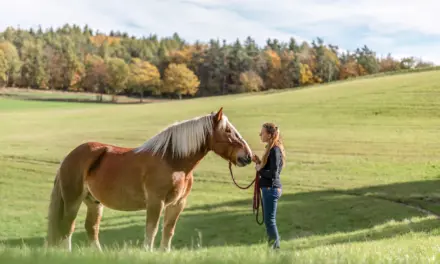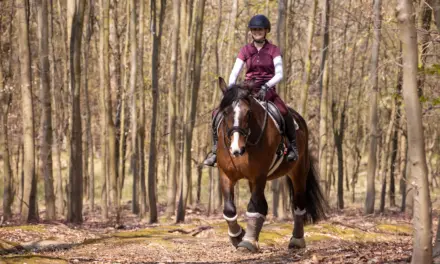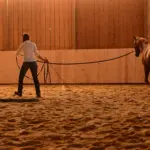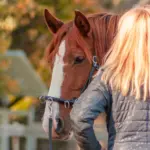Headcollar, lead rope, schooling whip & Co.
Key points at a glance:
- The right headcollar is the foundation – a well-fitting, sturdy headcollar allows for precise communication.
- The right lead rope makes all the difference – its length, material and weight have a significant impact on how clearly your signals come through.
- The schooling whip as an extended arm – not for punishment, but as a tool to support clear body language and working at a distance.
- Safety equipment protects both partners – sturdy footwear and gloves, and, where appropriate, a riding helmet for the handler or rider, plus boots or bandages for the horse, all help to minimise the risk of injury.
Groundwork with horses is becoming increasingly popular and forms the foundation of a trusting partnership between horse and handler. But before you can start training, having the right equipment is essential for both success and safety.
The headcollar – the most important means of communication
The headcollar forms the direct connection between horse and handler and should therefore be chosen with particular care. A high-quality headcollar made of leather or sturdy nylon offers the best combination of durability and comfort. It should fit perfectly: one that is too tight or badly adjusted can cause pressure points and even restrict the horse’s breathing, while one that is too loose can slip up into the eye area or come undone during training.
Headcollars with a broad noseband are particularly recommended, as they distribute the pressure more evenly. Groundwork can be done with a cavesson, a normal headcollar or a rope halter. A rope halter allows the aids and signals to come through more precisely than a standard headcollar. With a cavesson, it is easier to ask the horse for bend and flexion. When choosing, both the type of groundwork you want to do and the handler’s level of experience are important factors. At the beginning, it is usually safer for both partners to work with a simple, ordinary headcollar.
The lead rope – an extension of your arm
Choosing the right lead rope is crucial for successful groundwork. A rope of about 3.5 to 4 metres in length gives you enough room for a variety of exercises without losing control. The material should feel secure in the hand – cotton or cotton–polyester blends have proved their worth, as they offer good grip even when wet. Biothane is also very popular for reins or lunge lines. Here again, the choice of material depends on the type of groundwork you are doing.
The weight of the rope also plays an important role. A rope that is too light does not transmit your signals clearly enough, while one that is too heavy can bother the horse. The ideal rope has enough weight of its own to hang in a soft loop when you are leading with a loose contact, but is not so heavy that it disturbs the horse. Lead ropes with heavy snap hooks should be avoided, as they can become a safety risk when the horse moves quickly. A simple, lightweight clip is usually the better choice.
The schooling whip – precise communication at a distance
Many horse owners are hesitant about using a schooling whip, but in groundwork it is an indispensable aid – not for punishment, but to refine communication. A good groundwork whip should be around 1.20 to 1.50 metres long and flexible enough to follow natural movements.
The whip acts as an extension of your arm and allows you to give precise touches without changing your position, or to reinforce your body language without actually making contact. You should choose a whip with a comfortable handle that is well balanced and remains pleasant to hold even during longer training sessions. A small lash at the end can be useful, but it should not be too large or too heavy.
Safety equipment – protection for horse and handler
Safety should always be the top priority in groundwork. A well-fitting riding helmet protects you from injury, even when working from the ground. Horses can react unpredictably, and a knock from the head can have serious consequences. You should also always wear sturdy footwear with a good tread – trainers or sandals have no place on the yard.
Gloves can be very useful, especially when working with a young, inexperienced horse. They protect your hands from rope burns and give you a better grip. They should fit well while still allowing enough feel in your fingers so that you can give subtle signals through the rope.
Choosing additional training aids with care
In addition to the basic equipment, there are various extra aids that can be useful in certain situations. Cones or poles can be helpful for leading exercises and improving the horse’s focus. A cavesson is ideal for more advanced groundwork and for lunging, as it allows for even more precise influence than a headcollar.
Treats can be used as positive reinforcement, but should be given in moderation so they do not create constant expectation. A small bum bag or treat pouch can be very practical, keeping rewards to hand without tying up your hands.
Caring for and storing your equipment
High-quality equipment also needs to be cared for properly. Headcollar and lead rope should be cleaned regularly and checked for wear and tear. Cracks or frayed areas can become a safety risk at a crucial moment. All equipment should be stored in a dry place, out of direct sunlight.
Leather tack needs regular treatment with suitable care products to keep it supple and strong. For synthetic materials, you should also follow the manufacturer’s care instructions to maximise their lifespan.
Conclusion – quality over quantity
The right equipment for groundwork does not have to be expensive or extensive, but it should be chosen with care. A well-fitting headcollar, a suitable lead rope, an appropriate schooling whip and the necessary safety gear form the foundation of successful training. It is better to invest in a few high-quality items than to weigh yourself down with lots of inferior gadgets.
The best equipment is only ever as good as the person using it. Technique and an understanding of the horse are ultimately more important than the most expensive kit. With the right basic equipment and plenty of patience, there is nothing standing in the way of successful groundwork.
- The right equipment for groundwork - 10. November 2025
- The ideal training ground - 10. November 2025
- Mental preparation of the person - 10. November 2025

